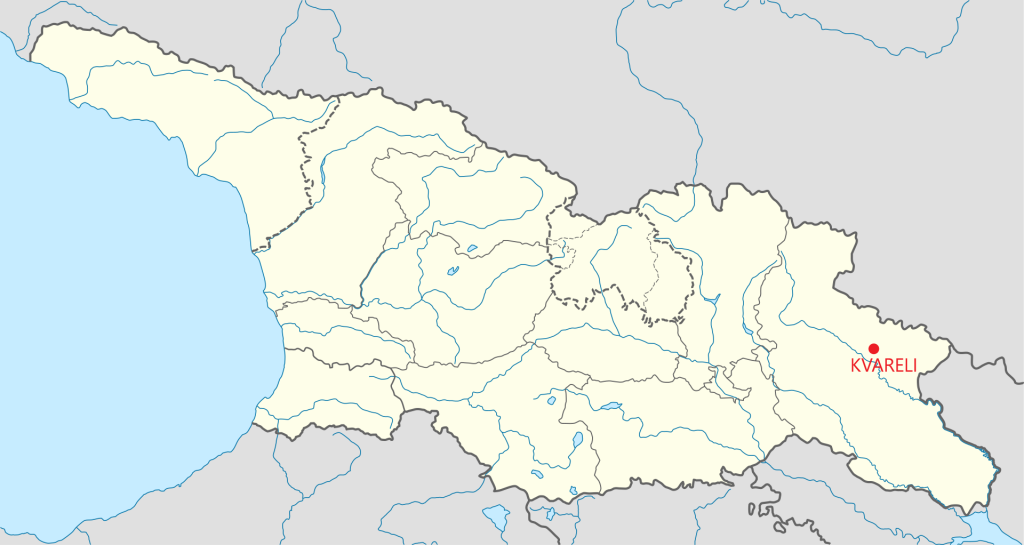
KVARELI
Sewage System
 City of Kvareli Waste Water Treatment Plant ptimization design – construction
City of Kvareli Waste Water Treatment Plant ptimization design – construction
Project Highlights:
 Location: Kvareli, Georgia
Location: Kvareli, Georgia
 Employer: United Water Supply Company of Georgia (UWSCG)
Employer: United Water Supply Company of Georgia (UWSCG)
💸 Project Value: 15,000,000 GEL
Timeline:
 Commencement Date: February 2023
Commencement Date: February 2023
 Status: Ongoing
Status: Ongoing
Nestled in the northeastern part of the Kakheti region, in the Alazni valley, the city of Kvareli stands as a testament to Georgia's rich cultural and natural heritage. At an average height of 430 meters above sea level and 145 km from Tbilisi, Kvareli is poised to embrace a transformative initiative: the design and construction of the Kvareli Water Treatment Plant (WWTP) and the United Water Supply Company of Georgia's service center.
Detailed Project Preparation:
- Preparation of a comprehensive project for the wastewater treatment plant, meticulously crafted to meet the customer's requirements.
- Rigorous specifications and cost estimates preparation to ensure transparency and informed decision-making.
Construction:
- Construction of the treatment facility in accordance with the detailed project, ensuring precision and quality.
Training for Future Operation:
- Provision of training for future operation in alignment with the customer's requirements, ensuring seamless functionality.
Innovative Technology - Aerobic Granular Sludge (AGS)
For the water treatment plant, Invest Group, in collaboration with our partner Ecohub, introduces groundbreaking Aerobic Granular Sludge (AGS) technology. This marks the first time this innovative technology is being utilized in Georgia, and we are proud to pioneer this development.
About AGS Technology:
- Revolutionary Solution: AGS technology revolutionizes wastewater treatment with its efficiency and effectiveness.
- Environmental Sustainability: AGS technology offers environmentally sustainable wastewater treatment solutions, aligning with modern ecological standards.
- Operational Excellence: AGS technology ensures optimal performance and operational excellence, promising superior results.
At Invest Group and Ecohub, we are committed to innovation, excellence, and sustainability. The Kvareli Water Treatment Plant and Service Center project symbolize our dedication to advancing Georgia's infrastructure and environmental stewardship.
Wastewater treatment is a critical process for preserving environmental health and safeguarding public well-being. Conventional methods, such as activated sludge systems, have long been employed for this purpose. However, the limitations of these systems, including their large footprint, high energy consumption, and inefficiencies in nutrient removal, have spurred the search for alternative approaches. Aerobic Granular Sludge Technology (AGST) has emerged as a promising solution to address these challenges.
AGST represents a paradigm shift in wastewater treatment, leveraging the natural tendency of microorganisms to form dense granules under aerobic conditions. These granules, composed of a diverse microbial community, offer several advantages over conventional flocs, including higher settling rates, improved nutrient removal capabilities, and reduced energy requirements. This article explores the principles, applications, and benefits of AGST in wastewater treatment.
Principles of Aerobic Granular Sludge Technology
AGST relies on the formation and manipulation of aerobic granules, which are dense aggregates of microorganisms that develop under specific environmental conditions. Unlike conventional activated sludge flocs, which are dispersed and flocculent, aerobic granules exhibit a compact structure with well-defined microbial zones. This unique morphology enhances the performance of the treatment system in several ways:
- Enhanced Settling Characteristics: The dense structure of aerobic granules allows for rapid settling in sedimentation tanks, facilitating the separation of treated water from biomass. This results in a more efficient solid-liquid separation process and reduces the footprint of the treatment plant.
- Improved Nutrient Removal: Aerobic granules harbor diverse microbial populations capable of metabolizing organic matter and removing nutrients such as nitrogen and phosphorus from wastewater. The spatial organization of microorganisms within the granules promotes synergistic interactions and enhances nutrient removal efficiency.
- Reduced Energy Consumption: The compact nature of aerobic granules promotes efficient oxygen diffusion, minimizing the energy required for aeration. This translates to lower operational costs and reduced environmental impact compared to conventional activated sludge systems.
Tbilisi Office
- +995 579 70 70 07
- info@produceinvestment.com
- Vepkhistkaosani 6, Tbilisi, Georgia
Gori Office
- +995 595 90 60 30
- info@produceinvestment.com
- R.Sturua 18, Gori, Georgia